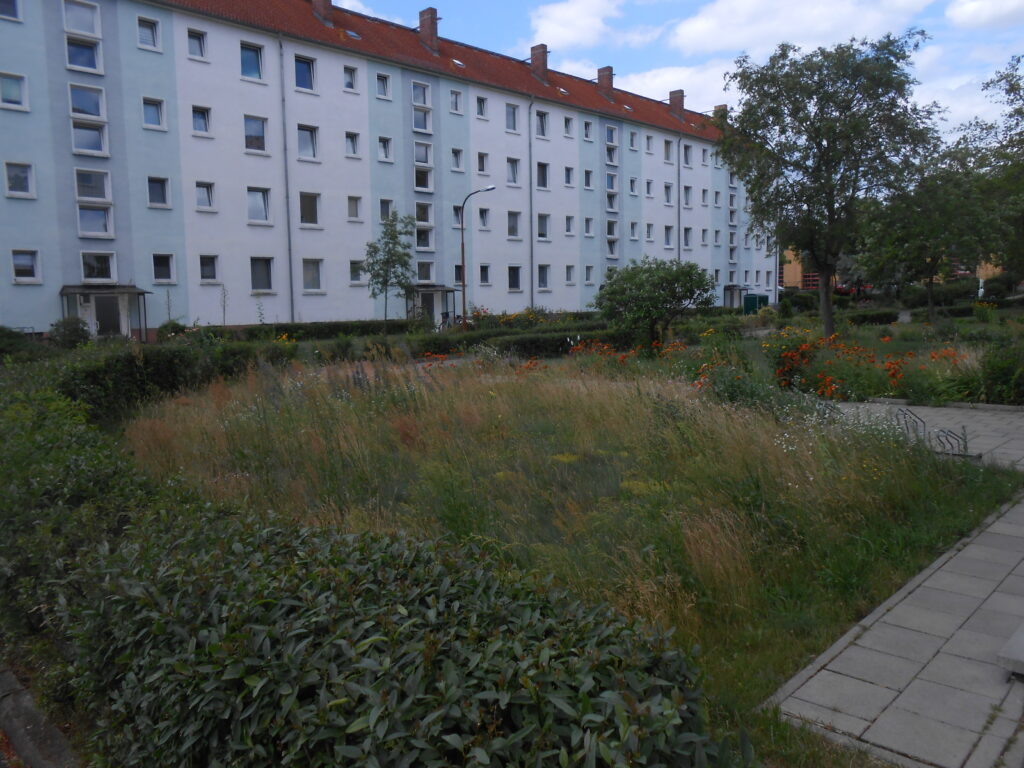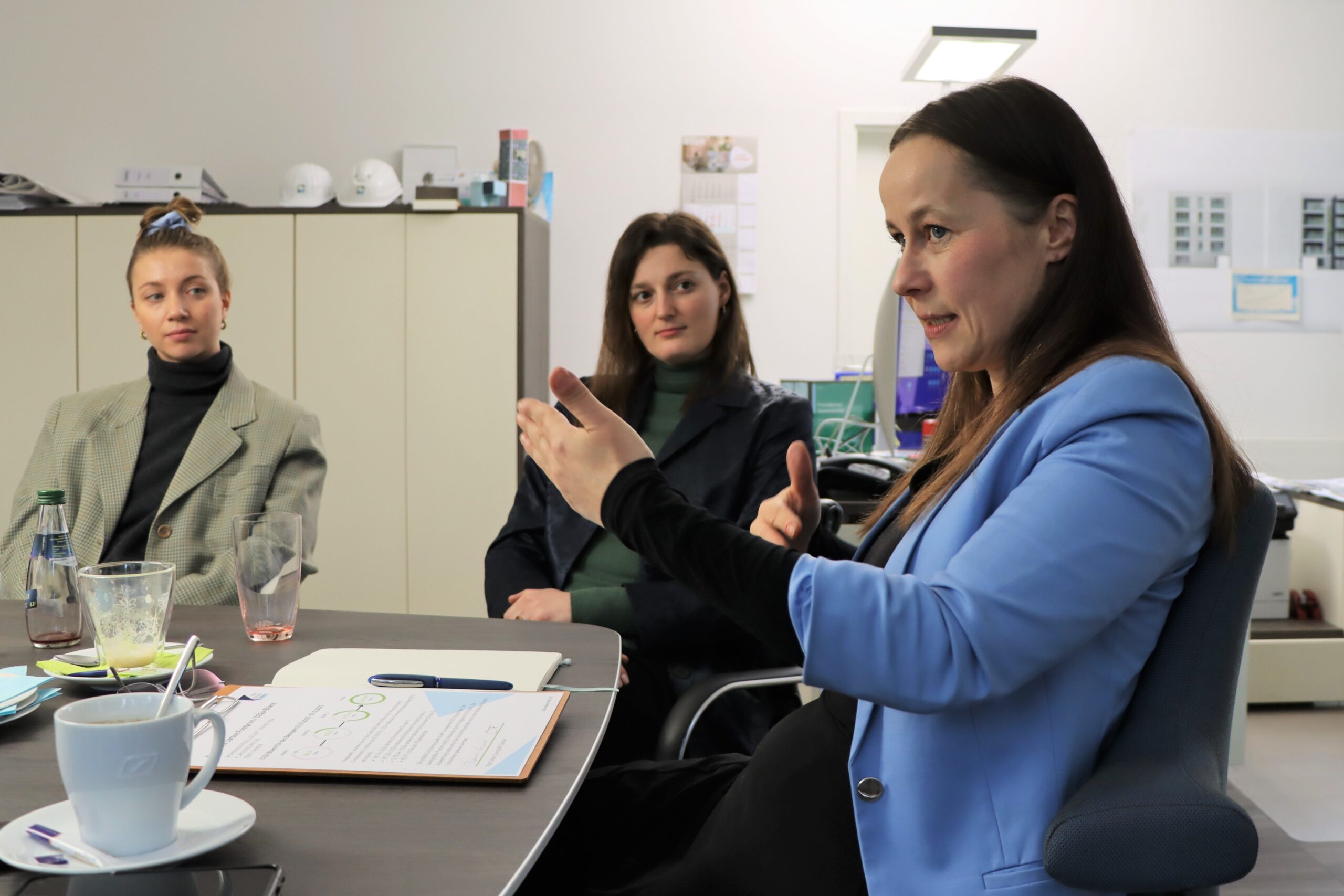From right to left in the image: Susanne Branding, Charlotte Francke (TFL), and Rebecca Jaeger (TFL) / © Katharina Wieske
“Trees are only cut down when there is an immediate danger,” explains Susanne Branding. For these decisions, she regularly consults Prof. Dr. Ibisch from the University for Sustainable Development in Eberswalde. His expertise is also invaluable when it comes to planting new greenery, as not all tree species can withstand the challenges of climate change. Her goal: To plant 50 new trees every year to provide cooler pathways in increasingly hot summers. Among the newly planted trees are a few mulberries: “It’s part of our city’s coat of arms, so it also has an identity-shaping aspect.”
However, more greenery does not automatically mean more habitat for animals. “A neatly trimmed hedge looks aesthetically pleasing but has little ecological value. Birds cannot find shelter in it,” Branding explains. That’s why additional nesting aids are being integrated into facades, leaves are deliberately left on the ground, and shrubs are stacked to create more living space for animals.

Resistance is part of the process: “Some of our tenants don’t always understand certain initiatives,” Branding admits. That’s why communication and education are essential. For example, a “Leaf Festival” was organized to illustrate the benefits of these measures. A special leaf composting area allows fallen leaves to decompose into humus, which can later be used for gardening.
Image: Diverse greenery in front of a residential building in Erkner / © Wohnungsgesellschaft Erkner
Another key aspect of sustainable living is safety. “A fire has enormous environmental consequences – something we must prevent,” Branding emphasizes. Therefore, all electrical wiring has been renewed, as old aluminum wiring often cannot handle today’s electricity demands and increases the risk of electrical fires. A tragic example is the fire in the Duchess Anna Amalia Library in Weimar, where countless historical books were lost forever.
What drives Susanne Branding is continuous questioning because sustainability is a vast field:
“There is no blueprint for this.”
In 2016, she initiated the EMAS process, one of the highest European environmental certifications. She first encountered this approach during her studies at the University for Sustainable Development in Eberswalde. Since certification, annual audits have taken place, setting new goals and evaluating progress.
Beyond safety and greening efforts, topics such as waste separation, personnel development, cleaning products, mobility, energy, construction materials, and much more raise the question of which paths lead to more sustainable solutions for various challenges.
“For those just starting out, it’s best to focus on the major issues first,” Susanne Branding advises. “Electricity or mobility, for example, have an obvious impact on the environment.” In 2014, the housing company in Erkner replaced its gasoline-powered cars with electric vehicles, which are better suited for short distances within the city. Since this year, tenants have also been able to borrow four cargo bikes free of charge. Her message to everyone: “You don’t have to reinvent the wheel. Look at best-practice examples and seek exchange – it saves a lot of effort!”
A Vision for the Future
Her wish for the future: “That it becomes normal to question things more and change our mindset. Access to knowledge should be easier so that pioneers and innovators can share their insights in network portals. This way, detailed questions—like the ones I’m currently dealing with, such as which sink is more sustainable—could be answered much faster. One must not underestimate how much time daily operations take.”
To drive this vision forward, Susanne Branding is currently working with the Chamber of Commerce and Industry of East Brandenburg and The Future Living to establish a working group. She places her hopes in the upcoming generational shift, as younger people tend to approach these challenges with greater responsibility and a proactive mindset.
The Bottom Line
Progress remains dynamic as long as there are internal or external impulses—this continuous movement is what drives everyone forward.

